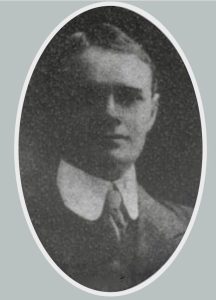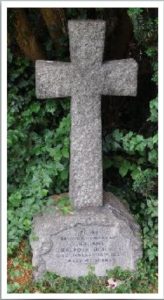Australian Naval and Military Expeditionary Force

Grahame Balfour-Ogilvy was born at Salcombe, emigration to Australia is not known but certainly this was before the Boer War of 1899-1902, as during this he served as a sergeant in 4th South Australia Imperial Bushmen contingent.
He enlisted at Adelaide on 22 May 1916, when aged 38 years 6 months, as a volunteer for service in the Australian Naval & Military Expeditionary Force (AN&MEF), in the occupied German New Guinea. He gave his profession as a horticulturalist.
At the outbreak of the Great War, at the behest of Great Britain, Australia occupied the territory of
German New Guinea. The town of Rabaul was the HQ of the German colony and became the capital of the Australian Mandated Territory of New Guinea. Post war, the territory was formally mandated to Australia by the League of Nations and it eventually Rabaul, a township in East New Britain Province, was destroyed by volcanic ash from a volcano in 1994.
Balfour-Ogilvy embarked for Rabaul on SS Matunga on 20 November 1916 and he was detailed for the Garrison Police on 12 January 1917, becoming a corporal ten days later. He returned to Australia on 5 November 1917 and was discharged on 19 November 1917 ‘at own request, having
completed service in ‘AN&MEF’. His service record in the Australian National Archives gives no hint of any further military service.
Balfour-Ogilvy was married, to Catherine Hannah and had two children, David G and Rosabel E. The National Archives has a record of the family arriving in London aboard the P&O Steamship Company’s SS Borda on 23 April 1920, having sailed from Adelaide. Balfour-Ogilvy is listed as a ‘fruit grower’, his wife employed on ‘domestic duties’ and the children, aged eight and 10 respectively, as ‘scholars’.
According to the CWGC ‘Debt of Honour’ Register, his parents were Commander Walter Balfour-Ogilvy RN and his wife Catherine, who lived at 1 Cotswold Lawn, Painswick Road, Cheltenham.
There are a number of aspects of his story which are puzzling:-
i. Whilst the date is within the parameters set for consideration as a ‘war death’, there is no evidence that he was serving with the military at the time – yet he appears in the CWGC Register.
ii. His headstone is a private one and makes no mention of any military involvement.
iii. What is the connection with Sandhurst? There does appear to be a parental connection with Cheltenham and his wife, as next of kin, appeared to be living there.
iv. Why was he in the UK — family visit?
v. A death certificate would undoubtedly reveal the cause of death and who reported it —which would add to the knowledge of this man.

Headstone of Corporal Grahame Balfour-Ogilvy (1059)
Researched by Graham Adams 20 March 2014 (revised)
